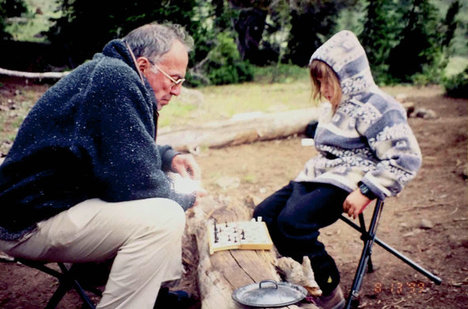(p. B1) Karen Aiach was working as a management consultant when she learned that her first daughter, Ornella, had Sanfilippo syndrome, a rare disease in which a missing enzyme causes toxic substances to build up in the body.
Ornella was 6 months old, and the prognosis was grim: She would develop mentally and physically to between ages 2 and 4, plateau and then lose whatever she had learned. She would become extremely hyperactive and develop sleeping disorders. Most likely she would not live past 15.
Within two years of the diagnosis, Ms. Aiach, who lives in a Paris suburb, had quit her consulting job to learn everything she could about the disease. She hired a neurobiologist to guide her in the world of medical research. And when she learned that few treatments were in the works, she founded a company called Lysogene to focus on genetic therapy.
Instead of raising money and awareness by setting up a nonprofit foundation, a more typical route, she opted to start a for-profit company to seek treatments, if not a cure. Far from common, what Ms. Aiach and other parents like her are trying is to leverage their wealth, contacts and the hope of sophisticated investors to jump-start research into rare diseases.
. . .
(p. B4) . . . with some rare diseases, where minimal research has been done, a little effort goes a long way.
Nicole Boice, who founded Global Genes, one of the leading rare-disease patient advocacy organizations, said even small investments can have meaningful impacts.
“You can start moving the needle with $3,500,” she said. “That leads you to the next $25,000, and then to innovation grants and funding at $100,000. That starts the interest from biotech.”
Gradually, parents like Matt Wilsey, a technology entrepreneur, have made headway. First, his family spent the better part of four years trying to figure out what afflicted his daughter, Grace, now 6. Even after her genome was sequenced, the first diagnosis turned out to be wrong. Grace, it finally was determined, was the second person in the world known to have a deficiency in the gene known as NGLY1.
“We went around the country,” Mr. Wilsey said. “We were just trying to find one doctor who had seen another patient with these symptoms.” After years of efforts, several dozen children have been found to have the same deficiency.
“Our goal is to find a cure,” said Mr. Wilsey, who lives in the San Francisco area.
“A lot of people in science dismiss that because cures are rare. But when I say cures, they’re not going to be astronauts. They’re going to be leading some sort of independent life. They’re going to be able to eat without choking. They’re going to be able to take a bath without drowning. They’re going to be able to communicate, whether with some assistive device or not.”
These parents also had a successful model to follow. In 1998, John Crowley left his job at Bristol-Myers Squibb to start a biotechnology company to search for a treatment for Pompe disease, a neuromuscular disorder that two of his children had. Within four years, the company, Novazyme Pharmaceuticals, had devised a treatment that he credits with saving their lives. His story was immortalized in the 2010 film “Extraordinary Measures,” starring Harrison Ford. And his company was bought by the pharmaceutical giant Genzyme for $137.5 million in 2001.
For the full story, see:
PAUL SULLIVAN. “Wealth Matters; Parents of Children With Rare Diseases Find Hope in For-Profit Companies.” The New York Times (Sat., DEC. 26, 2015): B1 & B4.
(Note: ellipsis added.)
(Note: the online version of the story has the date DEC. 25, 2015, and has the title “Wealth Matters; Building a Company to Treat a Rare Disease.”)

